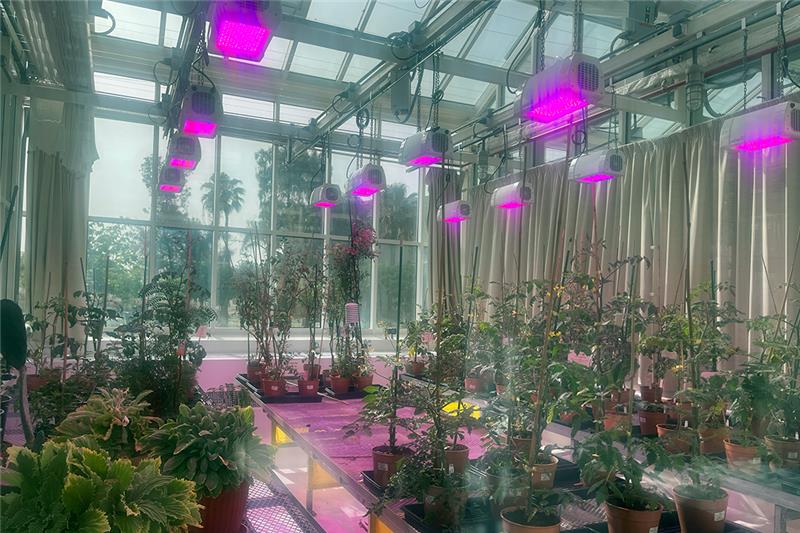KAUST develops nanotechnology that improves crop yields

Experiments at KAUST greenhouse facilities.
Crop yields inside miniature greenhouses increased by almost 200% using new KAUST hybrid technology
Scientists at King Abdullah University of Science and Technology (KAUST) have developed new cooling technology that promises to enhance crop yields and introduce new crops to arid regions like Saudi Arabia at affordable costs. The study can be read in Nexus.
The study shows how the technology, which is a combination of nanotech plastic and biodegradable mulch, lowers the temperature of miniature greenhouses in Saudi Arabia by 25 degrees Celsius and nearly doubles crop yields. In addition, it does so sustainably, as far less energy is consumed than that normally required to maintain greenhouses.
"The cooling of greenhouses can be extremely expensive. Our approach can make a number of crops available to arid regions, increasing their food security while at the same time helping meet carbon emission targets," said KAUST Professor Qiaoqiang Gan, who developed the nanotech plastic and is an expert of passive cooling systems – systems that need no electricity.
"Most greenhouse covers, whether they are made of glass or plastic, transmit more than 90% of light, including infrared light, which has no benefit to crop yield but generates heat. Our goal was to create a cover that lets good light in and keeps bad light out," continued Gan.
The KAUST invention consists of polyethylene, the most widely produced plastic in the world, coated with chemical nanoparticles. These nanoparticles absorb bad light – infrared light – which greatly contributes to heat, preventing this light from entering greenhouses, while allowing good light – visible light – which is the light that drives photosynthesis and plant growth, to pass through.
Still, all light, including visible light, heats soil. Mulch is commonly used to reflect sunlight to keep the soil cooler than otherwise. Cooler soil promotes more photosynthesis and thus more growth and better crop yields. As plants grow their leaves, which offer shade to the soil, the new mulch designed by Gan's postdoctoral researcher Yanpei Tian vanishes from the soil, providing a more sustainable solution to greenhouse cooling and better human health.
"Most commercial mulch is plastic and extremely wasteful. It results in about 1.5 million tons of waste, and more than 40% goes unrecycled. Plus, this leaves microplastics in our soil that can enter the food chain," said Tian.
Combining the two technologies in miniature greenhouses in Saudi Arabia to grow Chinese cabbage, the researchers achieved a crop yield that was 200% greater than grown with commercial covers and mulch.

